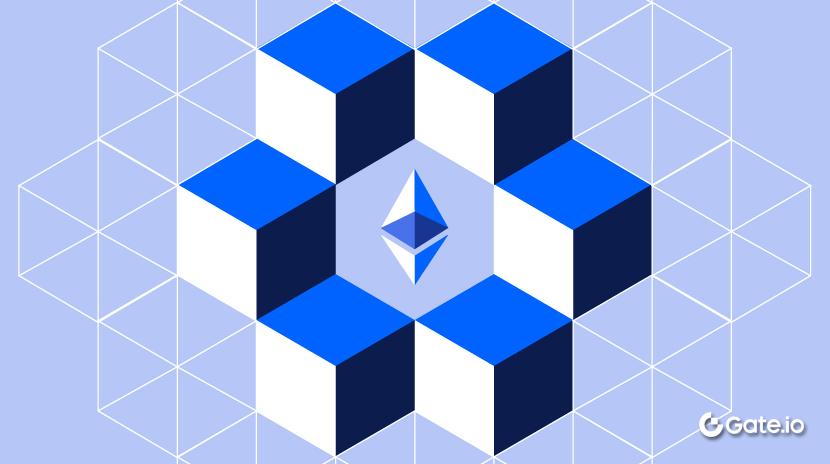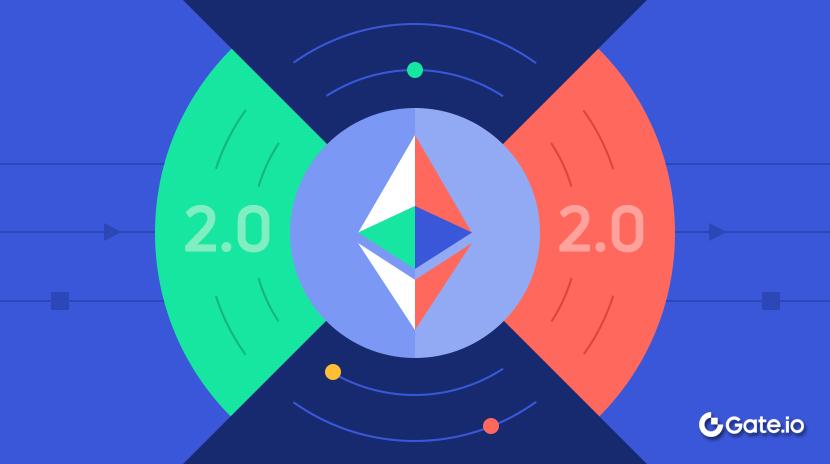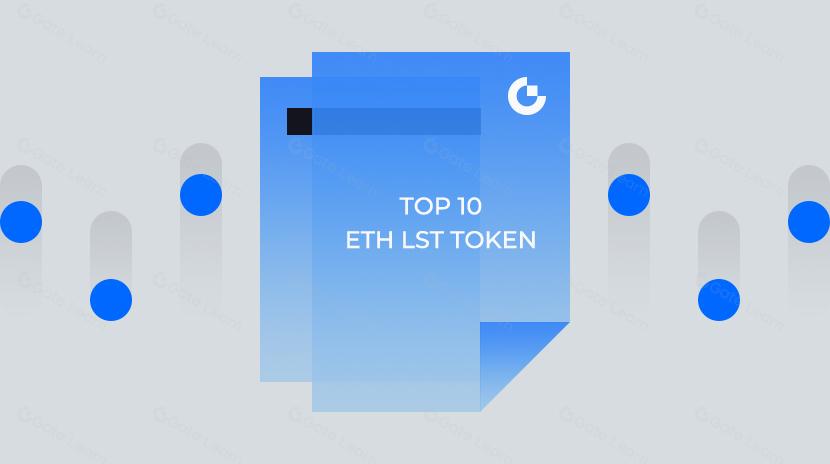Огляд форку Pectra Ethereum на тестовій мережі Mekong
Що таке Pectra?
Мережа Ethereum є одним із найцінніших і найзріліших блокчейнів загального призначення. Щороку конференція розробників Ethereum, Devcon, сприяє розвитку протоколу Ethereum. Обговоривши масштаби оновлення мережі Prague/Electra, Ethereum Foundation в кінцевому підсумку об'єднав їх в «Pectra». Pectra – це значне оновлення мережі Ethereum, призначене для впровадження низки оптимізацій та покращень на рівні консенсусу Ethereum.
З моменту свого створення Ethereum постійно вдосконалювала свою технологію. Злиття Ethereum у 2022 році та оновлення "Cancun" у 2024 році принесли значні досягнення для мережі. Оновлення Pectra вирішує високі комісії Ethereum, швидкість транзакцій та проблеми масштабованості. На останньому засіданні AllCoreDevs 2024 року, з в
Що таке Mekong?
Mekong – це тестова мережа, заснована на правилах Pectra Devnet 4, запущена в листопаді минулого року. Він дозволяє тестувати покращення та модифікації користувацького досвіду (UX), пов'язані з майбутнім оновленням Pectra, допомагаючи стейкерам ознайомитися з цими змінами. Назва Меконг походить від річки Меконг у Південно-Східній Азії, що відповідає розташуванню Девкон 7. Тестова мережа Mekong забезпечує середовище для тестування нових механізмів стейкінгу, депозиту та зняття коштів, не впливаючи на основну мережу Ethereum або інші тестові мережі. Тестування на Mekong стане орієнтиром для розгортання оновлення Pectra в інших мережах Ethereum.

Лідер протоколу Ethereum Foundation Тім Бейко опублікував у Twitter (Джерело: x.com/TimBeiko)
Тестова мережа Mekong є короткостроковою, але повністю функціональною, що містить всі очікувані EIP для Pectra. Розробники можуть побачити незначні зміни у специфікаціях або менші EIP, але функції, що включені тут, знайдуть шлях до існуючих публічних тестових мереж та остаточного Ethereum mainnet. Pectra вносить зміни у внески та виплати за участь, і тестова мережа Mekong є першим місцем для експериментів з цими модифікаціями. Фонд Ethereum закликає розробників тестувати цю мережу та надавати відгуки, щоб допомогти вдосконалити ці оновлення, забезпечуючи їх стабільність та зручність користувачів перед офіційним впровадженням.
Новий технологічний пропозиція (EIP)
Тестова мережа Mekong інтегрує всі пропозиції EIP, які будуть застосовані в форк Ethereum Pectra, охоплюючи різноманітні технічні поліпшення. Нижче наведено основні зміни, включені в тестову мережу Mekong:

Список Pectra Devnet 4 EIP:https://notes.ethereum.org
1. EIP-7702: Дозвіл на код рахунку EOA
EIP-7702 має на меті дозволити зовнішнім власним обліковим записам (EOA) встановлювати код у конкретних транзакціях. Ця пропозиція вирішує обмеження та відмінності між EOA та обліковими записами контрактів, забезпечуючи більшу гнучкість. В деяких сценаріях, встановлюючи код контракту, EOA можуть функціонувати подібно контрактним обліковим записам та виконувати певні операції через ці коди.
2. EIP-7251: Зміни в механізмі стейкінгу
EIP-7251 оптимізує механізм стейкінгу Ethereum 2.0, що дозволяє валідаторам мати вищий ефективний баланс, зберігаючи мінімум 32 ETH. Це збільшує ліміт стейкінгу з 32 ETH до 2048 ETH, покращуючи гнучкість та безпеку стейкінгу. Користувачі можуть стейкити та розстейкити з більшою ефективністю, скорочуючи періоди блокування та покращуючи ліквідність. Пропозиція також посилює безпеку, мінімізуючи ризики від зловмисних атак або недбалого управління стейкнутими коштами. Крім того, вона покращує механізм розподілу винагород, зроблячи механізм стейкінгу більш справедливим та прозорим для сприяння ширшій участі.
3. EIP-6110 / EIP-7002: Покращення механізму депозиту та виведення коштів
EIP-6110 та EIP-7002 колективно оптимізують механізми депозитів та виведення Ethereum, дозволяючи наближене миттєве оброблення депозитів. EIP-6110 забезпечує швидше та безпечніше визнання депозитів ланцюгом без впливу на швидкість активації валідатора. EIP-7002 поліпшує процес виведення, скорочуючи час очікування на виходження стейків та збільшуючи ліквідність коштів, що дозволяє учасникам виводити стейкнуті активи більш ефективно. Ці покращення підвищують прозорість, дозволяючи користувачам відстежувати стан депозитів та виведення, тим самим збільшуючи участь в стейкінгу Ethereum та знижуючи операційні бар'єри.
4. EIP-7685: Загальні запити до рівня виконання
EIP-7685 надає загальний механізм для обміну запитами, спровокованими рівнем виконання, між Рівнем Виконання Ethereum (EL) та Рівнем Консенсусу (CL). Ця пропозиція не накладає жорстких вимог щодо перевірки джерел запитів або обов'язковості перевірки запитів, пропонуючи розробникам гнучкість у проектуванні процесів генерації та перевірки запитів. Наприклад, виклики контрактів можуть безпосередньо спровокувати запити або використовувати механізми подій для їх передачі системі, що надає протоколювальникам максимальну адаптованість.
5. EIP-2537: Підтримка підписів BLS
EIP-2537 вводить попередню компіляцію для операцій кривої BLS12-381. BLS12-381 - це еліптична крива, яка використовується для ефективних доказів нуль-знань (zk-SNARKs), криптографічних підписів та інших криптографічних протоколів. Це підвищує доступність та продуктивність валідаторів Ethereum. Підписи BLS дозволяють об'єднувати кілька підписів, поліпшуючи ефективність, спрощуючи перевірку та зменшуючи витрати на газ.
6. EIP-2935: Збереження історичних хешів блоків в стані
EIP-2935 дозволяє зберігати історичні хеш-блоки в сховищі системного контракту, забезпечуючи більш ефективний запит хеш-блоку та верифікацію без потреби в додаткових обчисленнях або зовнішніх джерелах даних. Це підтримує моделі клієнтів без стану, пакетуючи хеш-блоки як докази (свідки), дозволяючи розумним контрактам отримувати доступ до них безпосередньо зі сховища стану, замість повторного обчислення їх блок за блоком, що зменшує обчислювальну складність.
7. EIP-7549: Видалення Індексу Комітету з Обсягу Доказу
EIP-7549 видаляє індекси комітету зі структури доказу для оптимізації ефективності голосування консенсусу. Наразі індекси членів комітету (ідентифікатори або позиції в межах комітету) зберігаються всередині структур доказів, що створює виклики ефективності. Переміщуючи індекси комітету зі структури доказу та зберігаючи їх окремо, ця пропозиція спрощує доступ до даних та управління, покращуючи ефективність агрегування голосів та зменшуючи витрати на верифікацію та мережеве навантаження.
Висновок
У висновку, Pectra є значним оновленням, яке значно підвищить масштабованість та користувацький досвід Ethereum. Воно готується до переходу на mainnet протягом наступних місяців. Крім того, розробники готуються до наступного Pectra devnet, Pectra Devnet 5, хоча Pectra Devnet 4 залишається стабільним і планується продовжувати роботу. Майбутні devnets будуть впроваджувати подальші зміни у специфікації, що свідчить про те, що оновлення все ще розвивається.
Пов’язані статті

Як поставити ETH?

Що таке Wrapped Ethereum (WETH)?

Що таке Об'єднання?

Що таке Neiro? Все, що вам потрібно знати про NEIROETH у 2025 році

Що таке Ethereum 2.0? Розуміння злиття


